
2021 O. H. Ammann Research Fellowship in Structural Engineering
Shanglian has been awarded the "2021 O.H. Ammann Research Fellowship in Structural Engineering" by ASCE on Sep. 22, 2021.
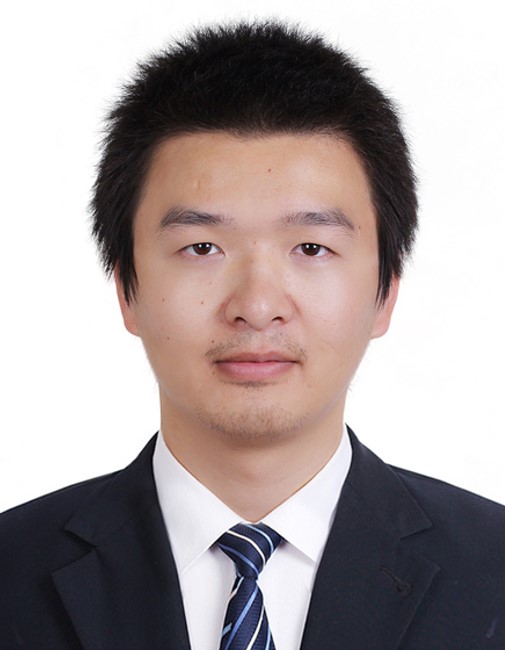
Congratulations to Shanglian who received the 2021 O. H. Ammann Research Fellowship in Structural Engineering fellowship from ASCE. Shanglian's research is focused on developing novel deep learning techniques to detect defects in civil engineering structures.
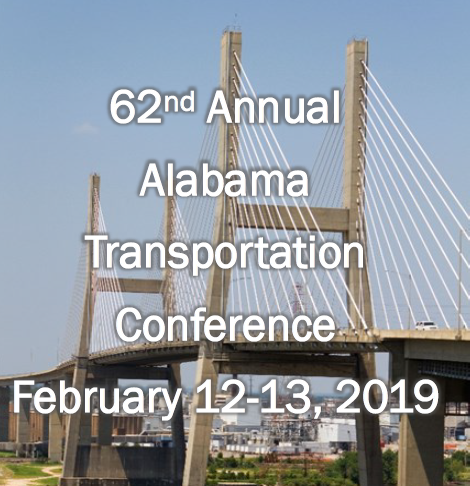
62nd ALDOT Annual Transportation Conference
Prof. Song has been invited to give a presentation at the 62nd ALDOT Annual Transportation Conferece in Montgomery, on Feb. 12th, 2019.
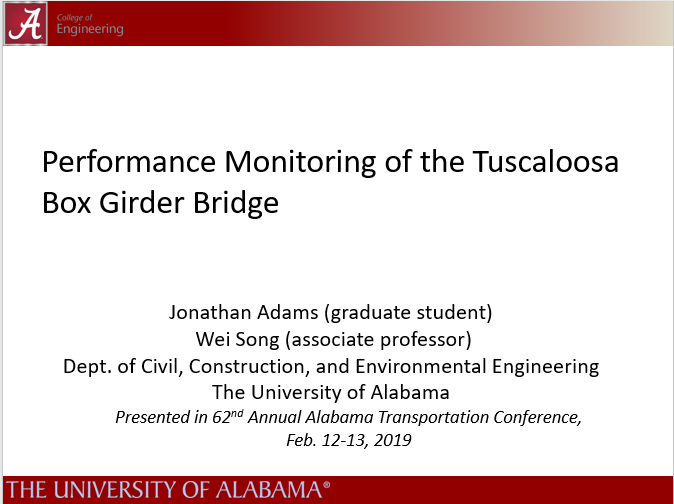
The title of the presentation is Performance Monitoring of the Tuscaloosa Box Girder Bridge. In this presentation, the research program of evaluating the new Tuscaloosa steel box-girder bridge has been introduced. The instrumentation layout and some of the field effort has been shown to the audience.
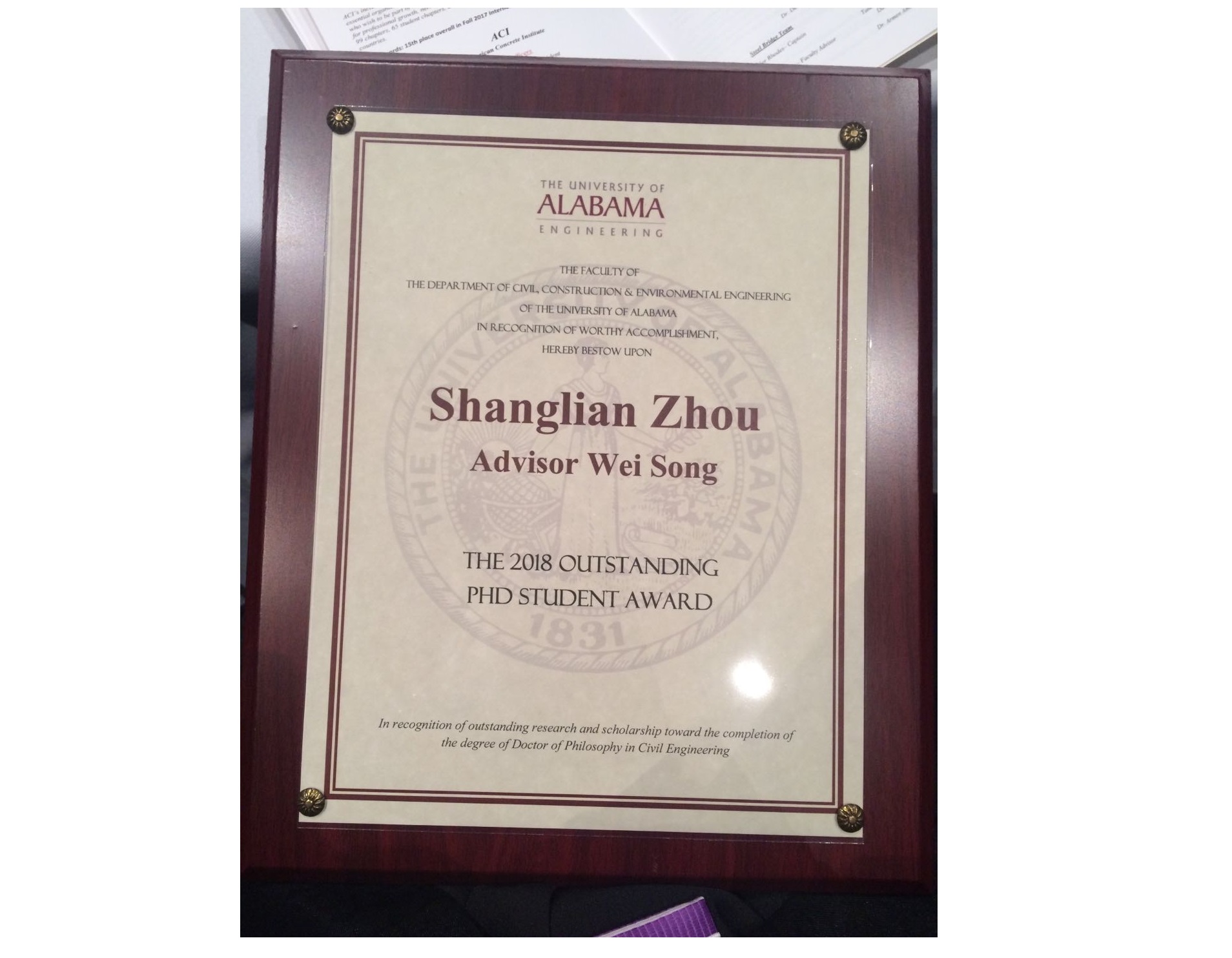
The 2018 Outstanding PhD Student Award
Shanglian has been awarded "The 2018 Outstanding PhD Student Award" by the department on Apr. 4th, 2018.
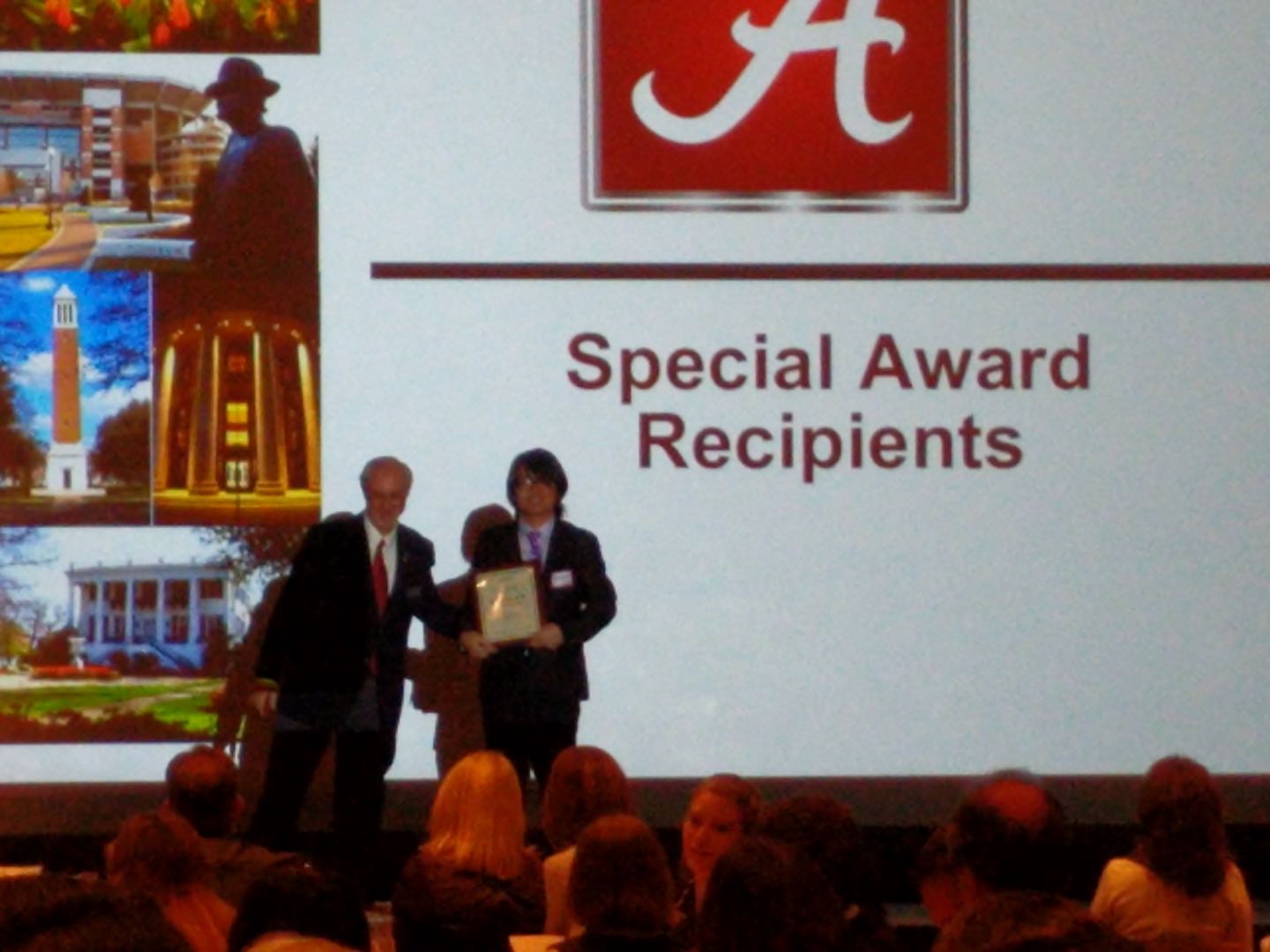
Shanglian is receving the award from the department head, Prof. Ed Back. Congratulations Shanglian!
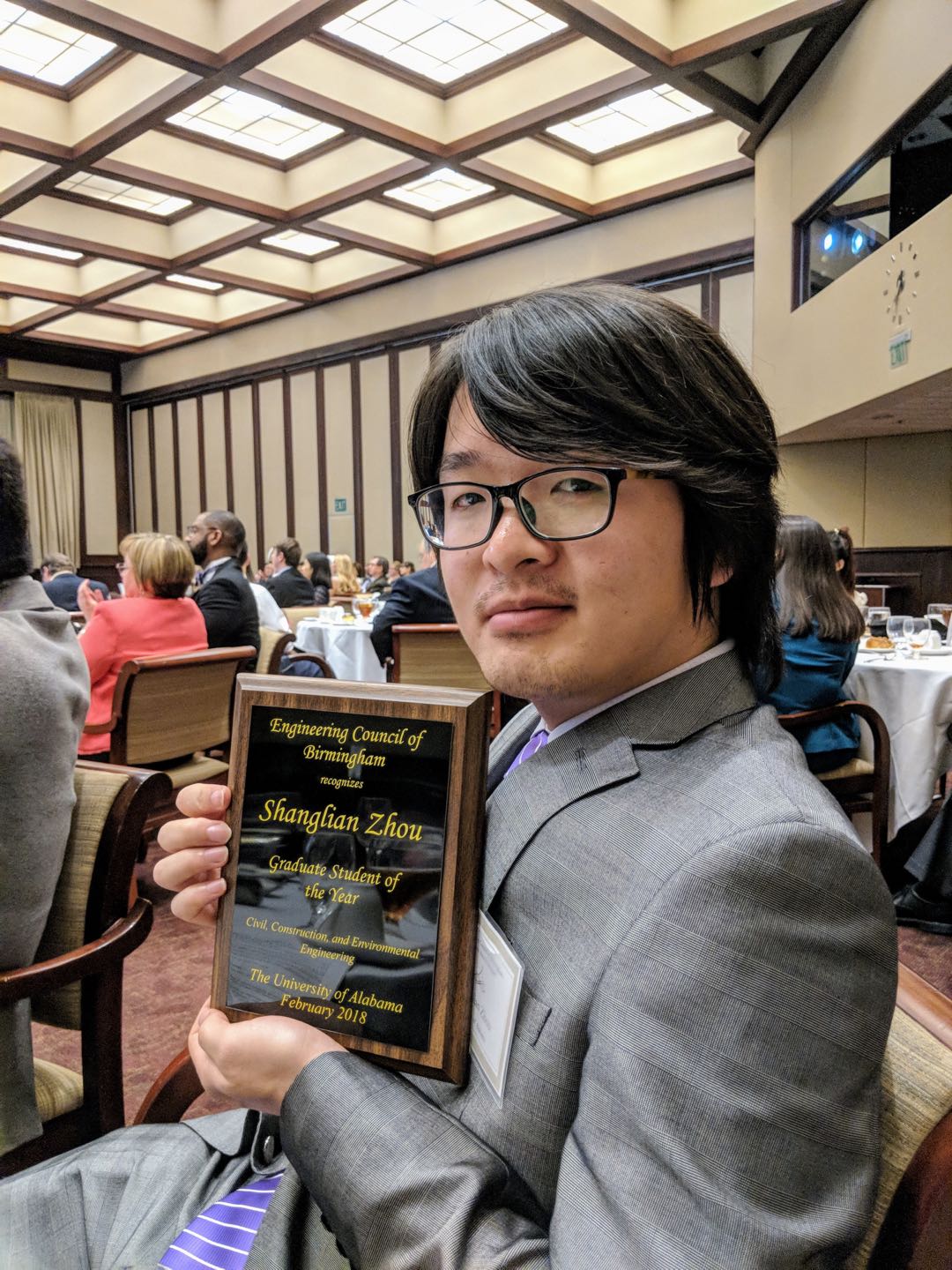
The 2018 Graduate Student of The Year Award
Shanglian has been awarded "The 2018 Graduate Student of The Year Award" by the Engineering Council of Birmingham (ECOB) on Feb. 20th, 2018.
.jpg)
Shanglian is receving "The 2018 Graduate Student of The Year Award" at the awrad ceremony held at The Harbert Center in Birmingham.

61st ALDOT Annual Transportation Conference
Prof. Song has been invited to give a presentation at the 61st ALDOT Annual Transportation Conferece in Montgomery, on Feb. 12th, 2018.

The title of the presentation is Investigation on Cross-frame Behavior in Steel Girder Bridges. The presentation introduces the research program to investigate the cross-frame behavior in the widely used steel girder bridges in Alabama (see the above figure).
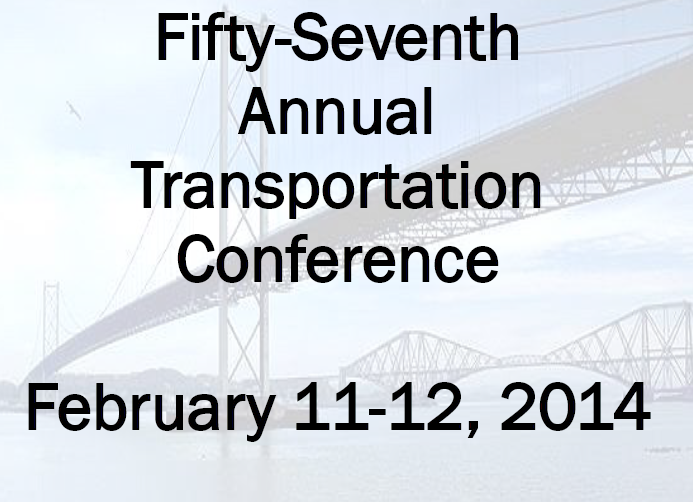
57th ALDOT Annual Transportation Conference
Prof. Song has been invited to give a presentation at the 57th ALDOT Annual Transportation Conferece in Montgomery, on Feb. 11th, 2014.
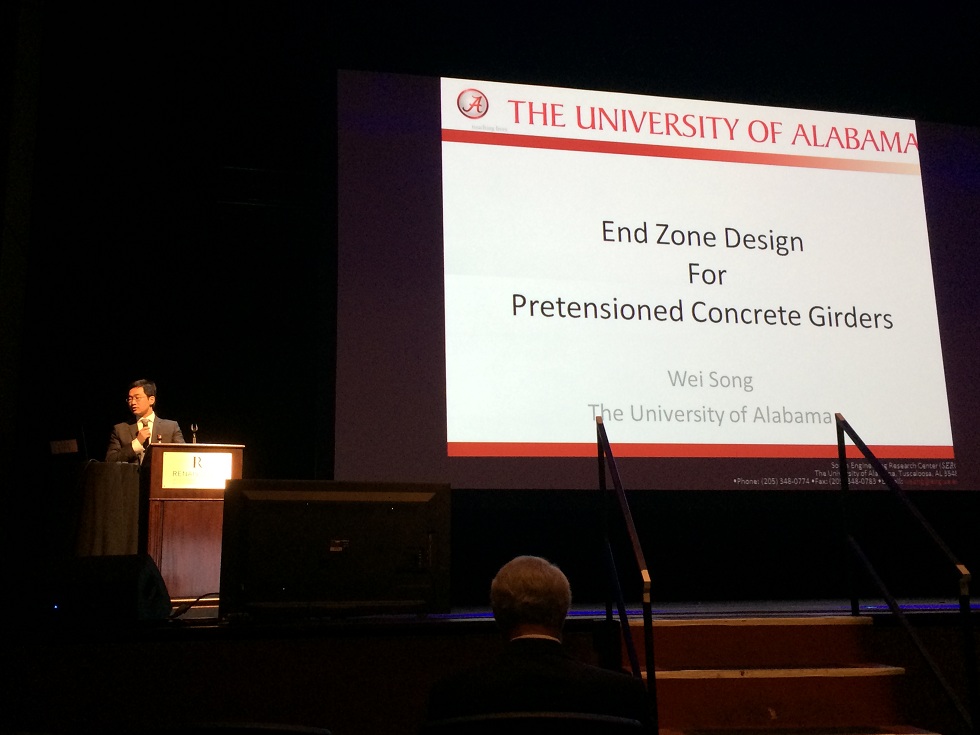
The title of the presentation is End Zone Design For Pretensioned Concrete Girders. The presentation has focused on the widely exist end zone issues in deep wide-flange pretensioned girders, and summarized the research discoveries on end zone reinforcement design from several state DOTs accross the country.
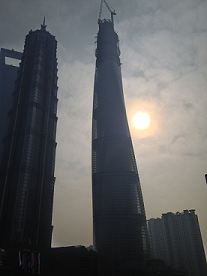
Visit Shanghai Tower Construction Site
On December 25th, 2013, I took a visit to the Shanghai Tower construction site to observe this on-going skyscraper project. As you can see from the photos below, the main structure has already been topped-off. Currently, the installation of glass curtained wall is about to be completed. The entire construction of the tower will be completed in 2015. Click "Read More" to see more photos in the visit.
The designed height of Shanghai Tower is 632 meters (121 stories). Upon its completion, it is going to be the tallest building in China, though it might be soon surpassed by other recently annouced skyscraper projects. The photo below is the Shanghai Tower standing shoulder-to-shoulder with the Jin Mao Tower (another skyscraper in the area, height 420 meters) in the morning haze.

Twelve mega-columns are supporting this magnificent landmark tower, two located in each direction and one more in each of the four corners. Here is a glimpse of the bottom of the tower, and a close-up view of one of the mega-columns.
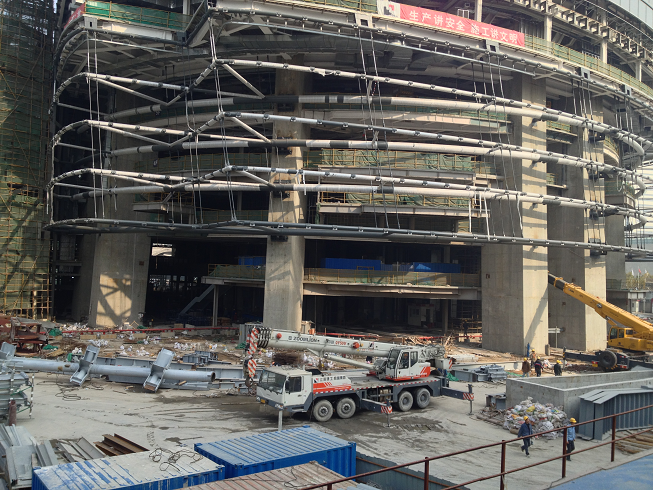
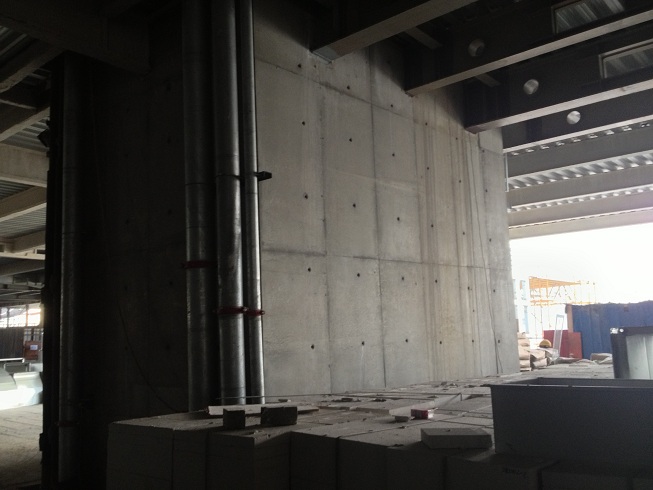
Massive steel connections are used in the construction (see below). The thickness of some of the welds has reached 5 inches.
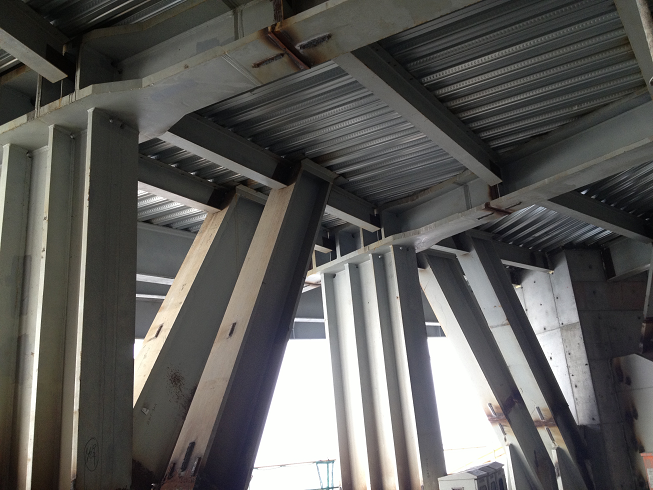
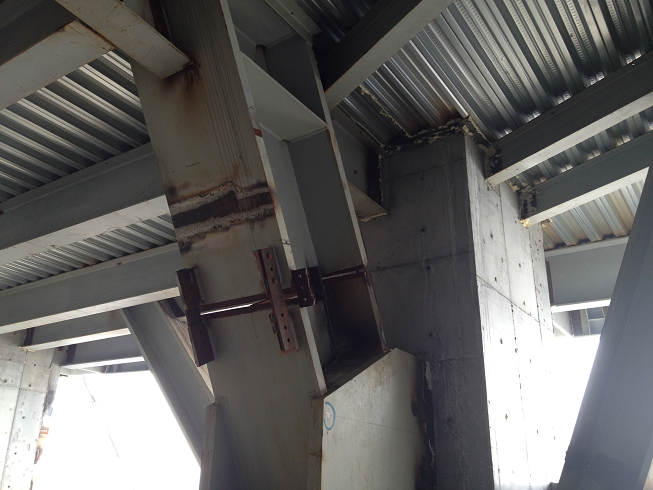
To get to the top, one needs to take elevator to the 82nd floor and then switch to construction hoist to climb to the top. Here is a picture showing the Bund when looking out from 600 meters above. Based on the other threads provided below about skyscrapers, you might be wondering about the techniques applied on this building to reduce vibrations. Yes, a TMD that is even heavier than the one in Taipei 101 will be installed on the top of the Shanghai Tower, and I learned there will be something new to the design of this TMD comparing to its predecessors...... Let's find out more when the veil is revealed at the end of 2014.
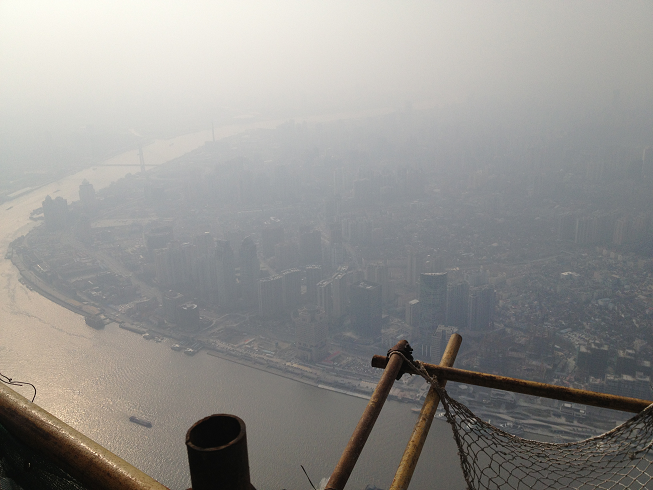
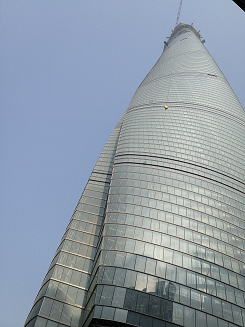
After I came down from the top, a look-up photo was taken to show the awesome tower cranes intalled at the top. They are able to pick up the construction material all the way from the bottom.
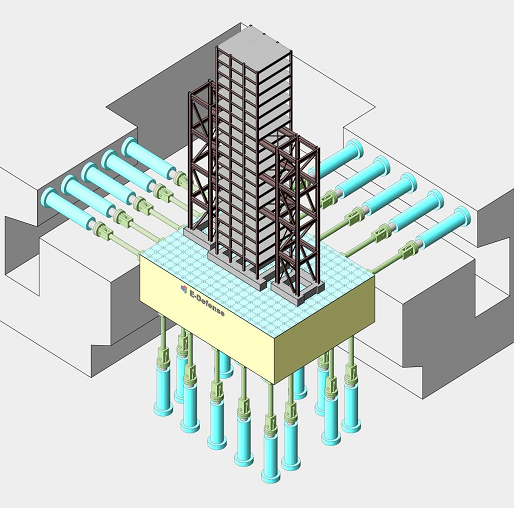
NEES/E-Defense Collaborative Earthquake Research Planning Meeting
Prof. Song is going to attend the NEES/E-Defense Collaborative Earthquake Research Planning Meeting under the generous support from NSF. The meeting is organized by the NEES/E-Defense Joint Technical Coordinating Committee. It will be held at the Disaster Prevention Research Institute (DPRI) at Kyoto University, from December 11th to 13th, 2013.
E-Defense operates the world's largest and most advanced 3-D shake-table.
Under the full payload of 1,200 ton-force (2690 kips), the table can reproduce the most severe ground motion recorded during the 1995 Hyogoken-Nanbu earthquake amplified by a factor of 1.3.
The upgrade in 2012 has further extended its capacity.
Over the years, NSF funded Network for Earthquake Engineering Simulation (NEES) has established several collaborative effort with E-Defense on investigating advanced structural system in improving seismic resilience. This planning meeting aims to encourage the US-Japan research collaboration, exchange information and disseminate findings in the current research front.
These are the photos from the collapse test of a 1/3-scale 18-story steel building on Dec. 11 at E-Defense during the meeting.
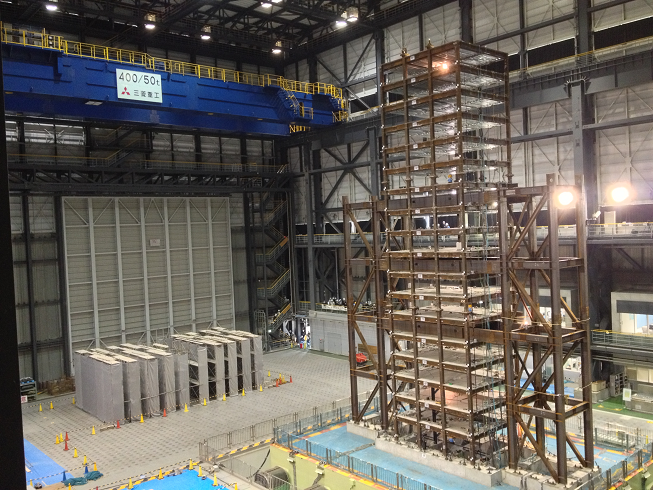
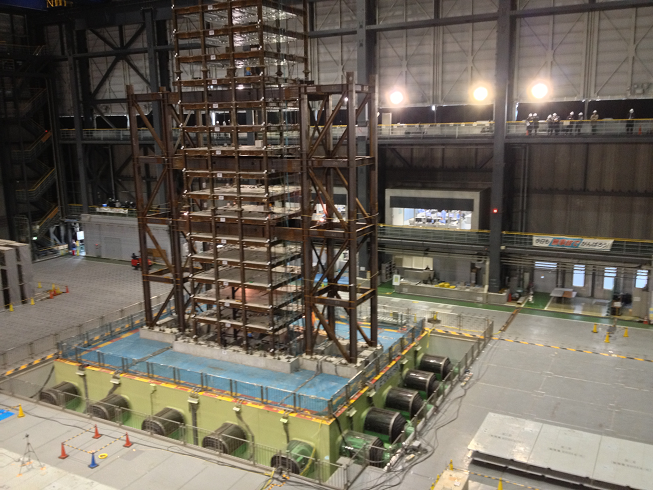

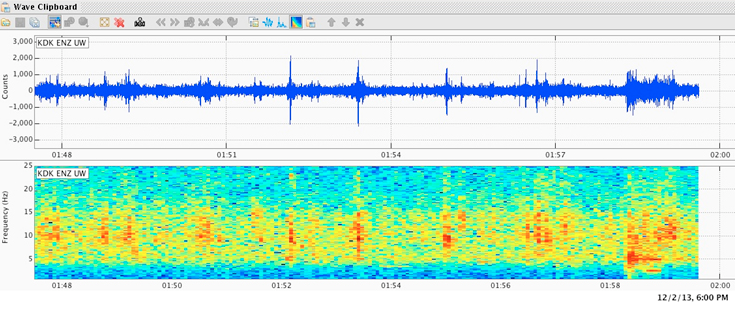
Football fans trigger earthquake in stadium
[From CNN: Dec. 3rd] While Seahawks fans jumping up and down during the Monday night's game against Saints, a seismometer in the University of Washington, which is about a block south of CenturyLink Field, has registered about a magnitude 1 or 2 earthquake! The video below will tell you more about the story.
After watching the video, I am certainly in awe of the power of football fans. And it would be interesting to monitor the vibration of Bryant-Denny Stadium. (p.s. It may take a few seconds for the video to load.)
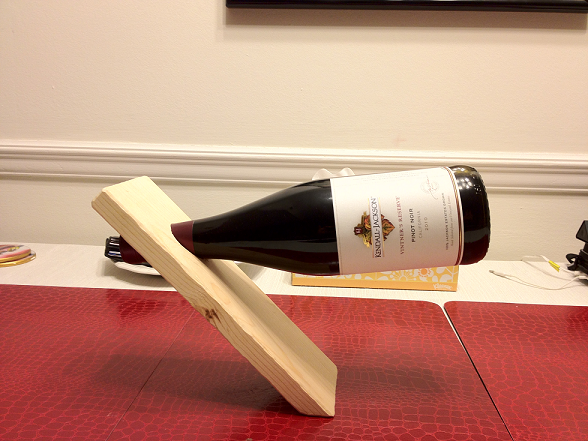
Self-balancing wine holder
Well, this certainly is an interesting excercise for those of you who are interested in statics. How to make a self-balancing wine holder? And where does the magic come from? Click "Read More!" to find out.
And here is why (picture from http://www.antonine-education.co.uk/):
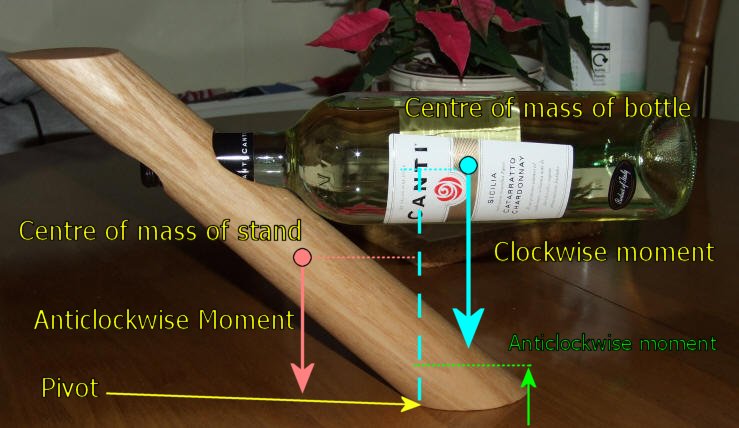
After you finish making your holder to hold one bottle, can you try to improve the design to hold more?

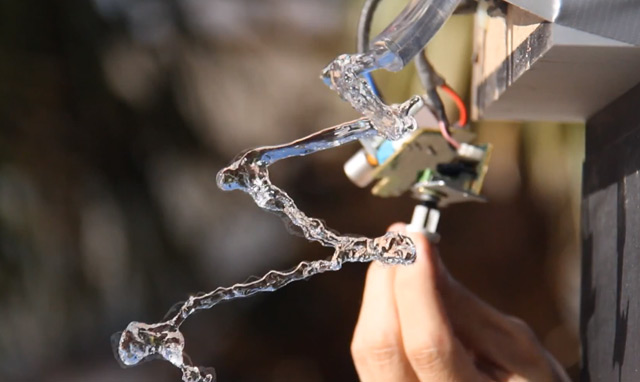
Neat tricks by data sampling
The following cool video was found on a friend's website. It is about using video camera to capture falling water with different frame rates (or sampling rates). Take a look at the video see if you can find out the secret behind it.
OK, here is what happened. Set up the camera and switch it to 24 fps. Run an audio cable from your computer to the speaker. Set your tone generating software to 24Hz and hit play. Turn on the water. Now look through the camera and watch the magic begin. Your camera frame rate is synced up with the rate of the vibrations of the water so it appears to be frozen or still. If you want the water to look like it's moving backward set the frequency to 23Hz. If you want to look like it's moving forward in slow motion set it to 25Hz. Wanna find out more? Take the experimental dynamics class on "aliasing". It explains it all.
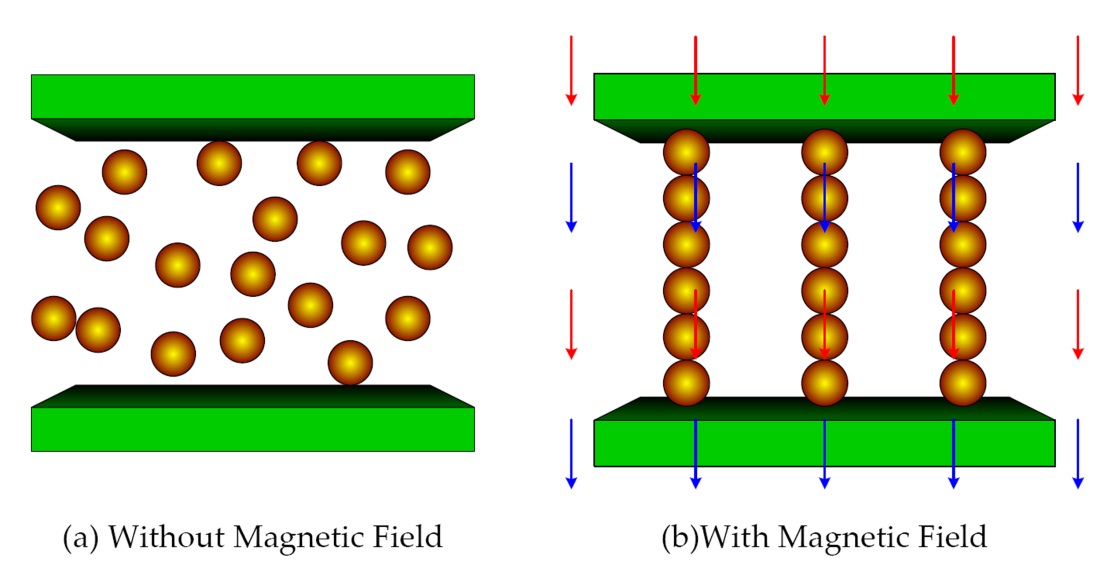
Smart Material: Magnetorheological fluid
If you read my Research and
MR damper pages,
you may come accross a type of dampers filled with a very special fluid: Magnetorheological fluid, or
so called "MR" fluid.
MR fluid consists of micron-sized, magnetically polarizable particles suspended in an
oil- or water-based medium. When unactivated, MR fluid behaves as ordinary oil. When exposed to a magnetic
field, micron-sized particles align themselves along magnetic flux lines to provide extra strength
to the fluid, such that it behaves like solid. The video below (click "Read More!") gives a brief introduction on
the MR fluid, as well as some of the associated applications.

Seismic Innovations on the new San Francisco Bay Bridge
On September 2, 2013, the new East Span of the San Francisco-Oakland Bay Bridge opened to traffic.
The bay bridge engineering team has applied several cutting-edge innonations in the design to improve its seismic resilience. Some of them have never been used before in bridge or building designs. The following video is going to tell you more stories on these innovations.

Taipei 101 Tuned Mass Damper
Taipei 101 tower was the world's tallest building by its completion in 2004. Its ground to roof height is 449.2 meters. Taipei 101 is designed to withstand typhoon and earthquake loads. The structural engineers has designed a tuned mass damper (TMD) to help the tower to reduce the vibration under dynamic loads.
The TMD is a steel pendulum with the weight of 660 ton. It is suspended from the 92nd to the 87th floor. The youtube video below shows its movement in response to the 8.0 earthquake that occurred 1000 miles away in Sichuan, China on May 12, 2008.
This wiki link provides a brief introduction on TMD: http://en.wikipedia.org/wiki/Tuned_mass_damper

Dampers in the longest suspension bridge in the world
The world's longest suspension bridge, Akashi Kaikyo Bridge, is located in Kobe and considered as one of Japan's finest engineering creations. Not only that, this bridge also survived the 1995 Kobe earthquake (at the expense that distance between the two towers has been increased from 1990m to 1991m). How did the Japanese engineers design the bridge to withstand a magnitude 7 earthquake? The video below is going to reveal the answer.
The Akashi Kaikyo Bridge holds three world's records: it is the longest, tallest, and most expensive suspension bridge ever built. To accomplish this great engineering feat, Japanese bridge engineers have stretched the limits in both bridge design and construction. Many advanced technologies have been applied on the bridge. The video below will explain how these technologies help the bridge to resist the Kobe earthquake!